Ex. 1.Найдите в словаре значения следующих слов:
abacus, table, attempt, except for, responsible, invent, generation, develop, reduce, to be due to, fit.
Ex. 2. Переведите следующие слова:
analogue, digital, vacuum tube, chip, layer, integrated circuit.
Ex. 3. Прочитайте и переведите текст на русский язык.
History of computersLet us take a look at the history of the computers that we know today. The very first calculating device used was the ten fingers of a man’s hands. This, in fact, is why today we still count in tens and multiples of tens. Then the abacus was invented, a bead frame in which the beads are moved from left to right. People went on using some form of abacus well into the 16th century, and it is still being used in some parts of the world because it can be understood without knowing how to read.
During the 17th and 18th centuries many people tried to find easy ways of calculating. J. Napier, a Scotsman, devised a mechanical way of multiplying and dividing, which is how the modern slide rule works. Henry Briggs used Napier’s ideas to produce logarithm tables which all mathematicians use today. Calculus, another branch of mathematics, was independently invented by both Sir Isaac Newton, an Englishman, and Leibnitz, a German mathematician.
The first real calculating machine appeared in 1820 as the result of several people's experiments. This type of machine, which saves a great deal of time and reduces the possibility of making mistakes, depends on a series of ten-toothed gear wheels. In 1830 Charles Babbage, an Englishman, designed a machine that was called ‘The Analytical Engine’. This machine, which Babbage showed at the Paris Exhibition in 1855, was an attempt to cut out the human being altogether, except for providing the machine with the necessary facts about the problem to be solved. He never finished this work, but many of his ideas were the basis for building today's computers.
In 1930, the first analog computer was built by an American named Vannevar Bush. This device was used in World War II to help aim guns. Mark I, the name given to the first digital computer, was completed in 1944. The men responsible for this invention were Professor Howard Aiken and some people from IBM. This was the first machine that could figure out long lists of mathematical problems, all at a very fast rate. In 1946 two engineers at the University of Pennsylvania, J. Eckert and J. Mauchly, built the first digital computer using parts called vacuum tubes. They named their new invention ENIAC. Another important advancement in computers came in 1947, when John von Newmann developed the idea of keeping instructions for the computer inside the computer’s memory.
The first generation of computers, which used vacuum tubes, came out in 1950. Univac I is an example of these computers which could perform thousands of calculations per second. In 1960, the second generation of computers was developed and these could perform work ten times faster than their predecessors. The reason for this extra speed was the use of transistors instead of vacuum tubes. Second-generation computers were smaller, faster and more dependable than first-generation computers. The third-generation computers appeared on the market in 1965. These computers could do a million calculations a second, which is 1000 times as many as first-generation computers. Unlike second-generation computers, these are controlled by tiny integrated circuits and are consequently smaller and more dependable. Fourth-generation computers have now arrived, and the integrated circuits that are being developed have been greatly reduced in size. This is due to microminiaturization, which means that the circuits are much smaller than before; as many as 1000 tiny circuits now fit onto a single chip. A chip is a square or rectangular piece of silicon, usually from ![]() to
to ![]() inch, upon which several layers of an integrated circuit are etched or imprinted, after which the circuit is encapsulated in plastic, ceramic or metal. Fourth-generation computers are 50 times faster than third-generation computers and can complete approximately 1,000,000 instructions per second.
inch, upon which several layers of an integrated circuit are etched or imprinted, after which the circuit is encapsulated in plastic, ceramic or metal. Fourth-generation computers are 50 times faster than third-generation computers and can complete approximately 1,000,000 instructions per second.
Ex. 4. Соотнесите слово из колонки А с утверждением из колонки В по образцу.
| А 1. abacus 2. calculus 3. analog computer 4. digital computer 5. vacuum tubes 6. transistors 7. chip 8. microminiaturization 9. slide rule 10. logarithm tables | В |
| a. instrument used for doing multiplication and division | |
| b. used in the first digital computers | |
| c. an instrument used for counting | |
| d. used in mathematics | |
| e. circuitry of fourth-generation computers | |
| f. invented by Americans in 1944 | |
| g. made computers smaller and faster | |
| h. used to help aim guns | |
| i. the reduction of circuitry onto a chip | |
| j. a branch of mathematics |
Ex. 5. Определить, являются следующие утверждения истинными или ложными (T или F), ссылаясь на информацию из текста.
| T F |
| 1. The abacus and the fingers are two calculating devices still in use today. |
| 2. The slide rule was invented hundreds of years ago. |
| 3. During the early 1880s, many people worked on inventing a mechanical calculating machine. |
| 4. Charles Babbage, an Englishman, could well be called the father of computers. |
| 5. The first computer was invented and built in the USA. |
| 6. Instructions used by computers have always been kept inside the computer's memory. |
| 7. Using transistors instead of vacuum tubes did nothing to increase the speed at which calculations were done. |
| 8. As computers evolved, their size decreased and their dependability increased. |
| 9. Today's computers have more circuits than previous computers. |
| 10. Computer technology has developed to a point from which new developments in the field will take a long time to come. |

 Получите свидетельство
Получите свидетельство Вход
Вход




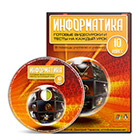
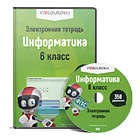

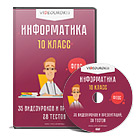
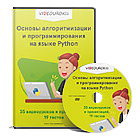
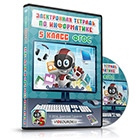

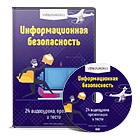
 History of computers. (42 KB)
History of computers. (42 KB)
 0
0 603
603 3
3 Нравится
0
Нравится
0


